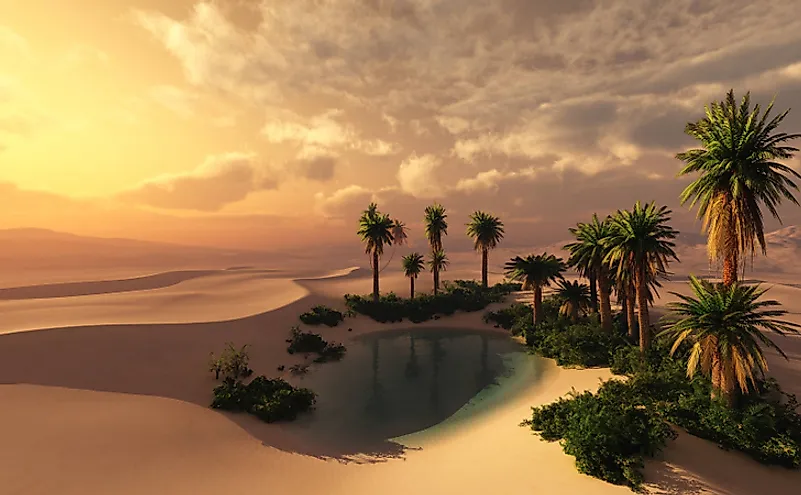What Is The Importance Of Oasis In A Desert?

An oasis is a fertile section of the desert where the water table is near the surface. Springs and other underground water sources irrigate oases. They vary in size from a small cluster of palm trees surrounding a well to an entire settlement and its irrigated cropland. Oases are vital features of the ecosystem.
Importance Of An Oasis
Oases are a vital part of life in the arid and semi-arid climate. In most cases, they are the only source of freshwater. The Sahara Desert has a vast underground aquifer that feeds over 90 oases. The Sahara is the largest hot desert in the world, and traveling between oases can take days, if not weeks. The oases are essential stops along trade routes as merchants must replenish food and water supplies. Al-Hasa, Saudi Arabia, is an important farming region in the Arabian Peninsula thanks to several oases. The area produces rice, corn, date, sheep, eggs, and cattle. Rivers in deserts are a permanent source of water and act as elongated oases. The Nile River is the lifeline of Egypt and provides water for domestic and agricultural use. Oases also provide water and a habitat for insects and small animals as well as a pitstop for migrating birds.
How An Oasis Forms?
Oases are created differently; some are natural, while others are human-made. An oasis can be created by an underground river or aquifer that generates enough pressure for water to seep to the surface. Such oases exist in harsh environments like deserts and are well-known to farmers, herders, and travelers. Other oases are created by above-ground sources of water, such as rainstorms, surface rivers, and swamps. Other geological factors such as rock layers beneath the Earth help trap and channel water along fault lines leading to water seeping into a nearby aquifer. Where water pressure is not enough to break through the surface, a well is dug to draw the water. Some boreholes dug near oases have been maintained for generations to provide water to nearby communities and livestock. The natural environment consisting of shrubs, trees, and other vegetation thrive in oases and help retain the water by providing protection from the elements. Desert oases are threatened by shifting sands and surface runoff that risk filling the well with sand, but palm trees and tubers provide a protective layer from such conditions. Some oases are created by distant sources of water, such as the Nile River, which creates several oases hundreds of miles from the river.











